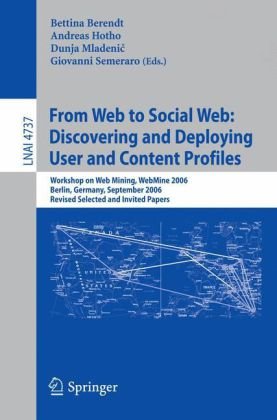

Most ebook files are in PDF format, so you can easily read them using various software such as Foxit Reader or directly on the Google Chrome browser.
Some ebook files are released by publishers in other formats such as .awz, .mobi, .epub, .fb2, etc. You may need to install specific software to read these formats on mobile/PC, such as Calibre.
Please read the tutorial at this link: https://ebookbell.com/faq
We offer FREE conversion to the popular formats you request; however, this may take some time. Therefore, right after payment, please email us, and we will try to provide the service as quickly as possible.
For some exceptional file formats or broken links (if any), please refrain from opening any disputes. Instead, email us first, and we will try to assist within a maximum of 6 hours.
EbookBell Team

4.4
12 reviewsThe World Wide Web is a rich source of information about human behavior. It containslarge amount of data organizedvia interconnected Web pages,traces of information search, user feedback on items of interest, etc. In addition to large data volumes, one of the important characteristics of the Web is its dynamics, where content,structure and usagearechanging over time. This showsup in the rise of related research areas like communities of practice, knowledge mana- ment, Web communities, and peer-to-peer. In particular the notion of colla- rative work and thus the need of its systematic analysis become more and more important. For instance, to develop e?ective Web applications, it is essential to analyze patterns hidden in the usage of Web resources, their contents and their interconnections. Machine learning and data mining methods have been used extensively to ?nd patterns in usage of the network by exploiting both contents and link structures. We have investigated these topics in a series of workshops on Semantic Web Mining (2001, 2002) at the European Conference on Machine Learning / Pr- ciples and Practice of Knowledge Discovery from Databases (ECML/PKDD) conference series, in the selection of papers for the post-proceedings of the - ropean Web Mining Forum 2003 Workshop, published as the Springer LNAI volume 3209 “Web Mining: From Web to Semantic Web” in 2004, as well as in the Knowledge Discovery and Ontologies workshop in 2004 and in the selection ofpapersfor thepost-proceedingsofthe ECML/PKDD2005jointworkshopson Web Mining (European Web Mining Forum) and on Knowledge Discovery and